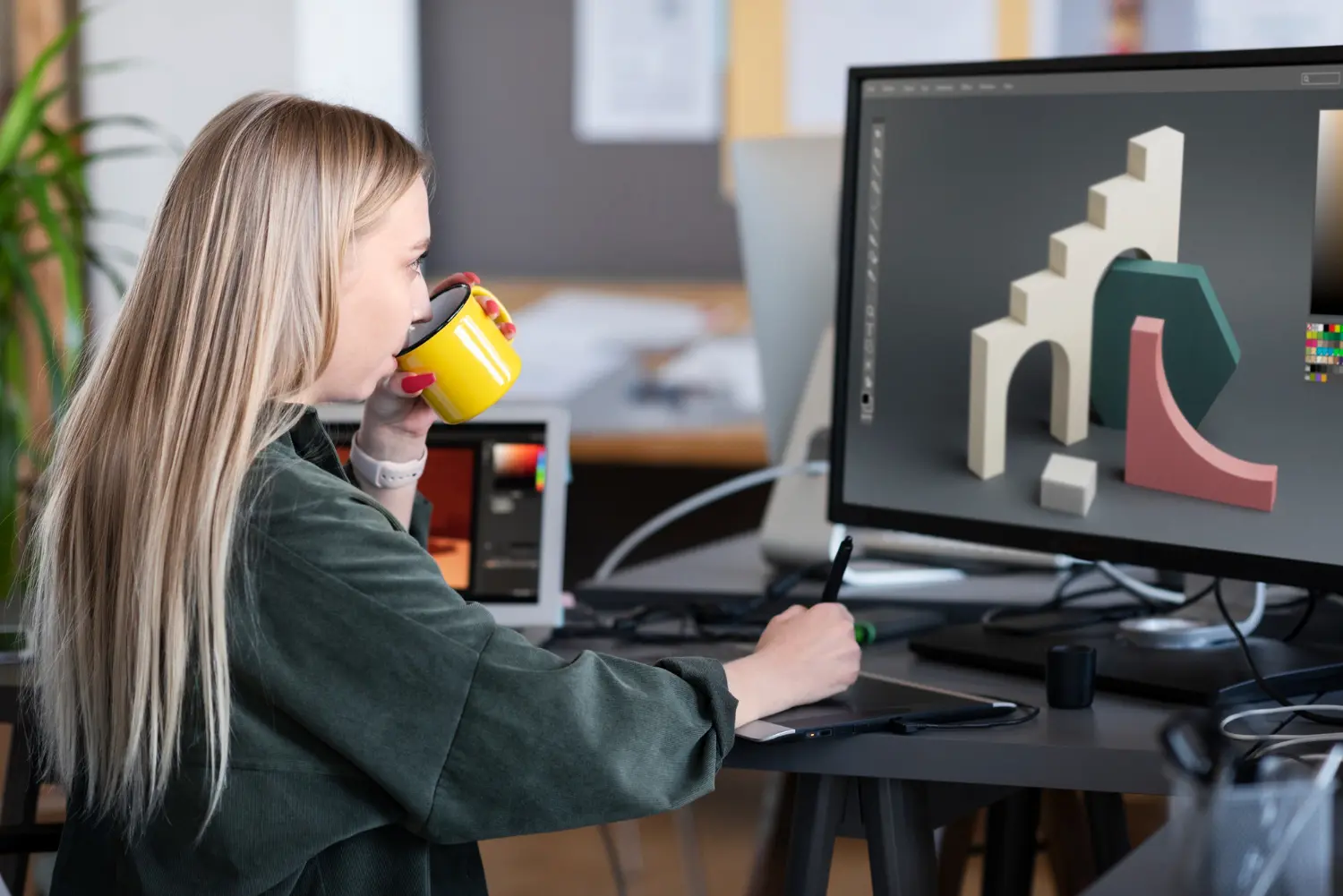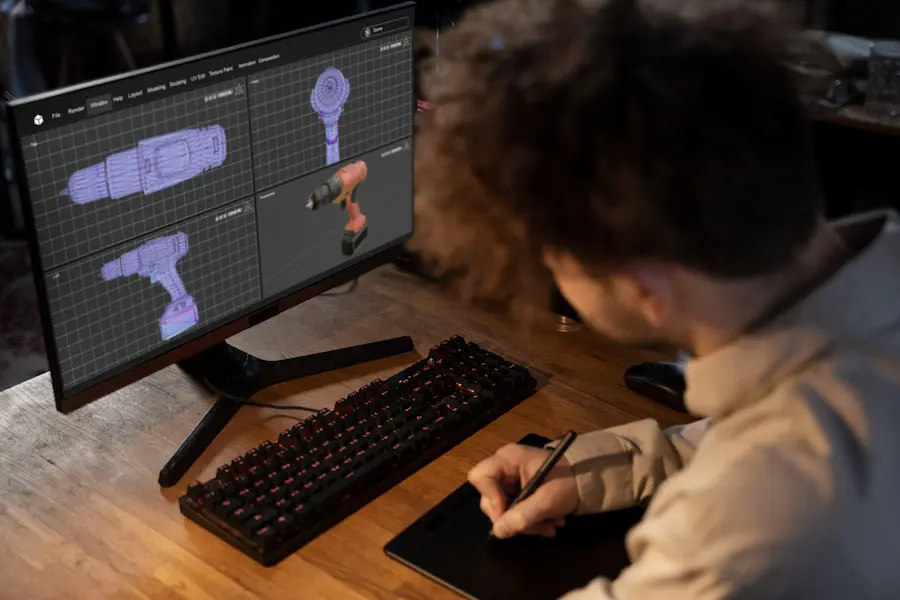3D modeling and 3D rendering are foundational techniques in modern visualization, playing crucial roles in industries like architecture, product design, entertainment, and gaming. These tools have revolutionized how concepts are created, refined, and presented, making them indispensable for professionals across creative and technical fields. While they are often part of the same workflow, their purposes are distinct and complementary.
3D modeling focuses on constructing the digital framework of objects, forming the technical backbone of an object, space, or character. It emphasizes precision and detail, ensuring that the design is structurally sound and adaptable for various applications. 3D rendering takes this foundation further by adding layers of realism. By applying textures, lighting, and visual effects, rendering transforms a functional model into a visually compelling image or animation that communicates ideas with clarity and impact.

Understanding the differences between these processes is critical for professionals who need to translate their ideas into tangible outcomes. Knowing when to prioritize modeling vs. rendering can streamline workflows, improve communication with stakeholders, and enhance the overall quality of a project. This article looks into their central characteristics, explores their practical applications, and provides help with selecting the right approach for your specific needs.
Key takeaways
- 3D modeling creates accurate digital representations of objects or scenes, focusing on structure and detail.
-
3D rendering converts models into visually rich images or animations by adding lighting, textures, and effects.
-
The two processes complement each other, with modeling serving as the foundation and rendering providing the finishing touches.
-
Modeling is essential for prototyping and testing, while rendering is critical for presentations and marketing.
-
High-quality modeling enhances the effectiveness of the rendering process.
What is 3D rendering?
3D rendering is the process of turning an existing 3D model into a realistic 2D image or animation. It involves applying lighting, textures, and materials to create lifelike visuals that reflect how objects interact with light and their environment. The process uses sophisticated software to simulate real-world effects, producing outputs that can range from photorealistic to stylized, depending on the project’s needs.
The 3D Rendering market is projected to grow threefold over the next five years, reaching 9.58 Billion by 2030. As such, it’s more important than ever to incorporate it into your eCommerce business. Industries like architecture, product design, and entertainment heavily rely on rendering. Architects use it to create compelling visualizations of buildings, helping clients envision completed spaces. Marketers use rendering to showcase products before they are manufactured. In film and gaming, it is central to creating immersive environments and special effects. Rendering is often the final step in visualization, making it indispensable for translating concepts into visually compelling presentations.
What is 3D modeling?
3D modeling is the creation of a digital representation of an object, scene, or character. This process involves using software tools to shape points, edges, and polygons into a cohesive structure. The end result is a 3D model that can be used for a variety of purposes, including rendering, simulation, and even physical production with 3D printing.
Modeling is foundational in industries such as architecture, where it is used to design and refine building layouts, and product design, where it allows for prototyping and testing. In gaming and animation, 3D models form the basis of characters and environments. Software like Blender, Maya, and ZBrush are commonly used for modeling, offering flexibility and precision. A well-constructed model is critical for further processes like rendering, ensuring accuracy and adaptability in visualization workflows.
Differences between 3D modeling vs. 3D rendering
While 3D modeling and rendering are integral to visualization workflows, they serve different purposes and require unique skill sets. Modeling focuses on creating a digital foundation while rendering transforms that foundation into lifelike visuals. Understanding these differences is crucial for ensuring projects meet both functional and aesthetic standards.
Purpose and process
The purpose of 3D modeling is to create a technical and structural representation of an object or scene. It involves designing and shaping elements to reflect their dimensions, geometry, and relationships. Rendering, on the other hand, focuses on the visual enhancement of these models. By adding realistic lighting, shadows, and textures, rendering creates polished outputs that are ready for presentation. Together, these processes ensure both technical accuracy and aesthetic appeal.
Tools and techniques
Modeling tools such as Blender, SketchUp, and Maya provide the ability to construct and refine objects. Techniques like digital sculpting, extrusion, and polygonal modeling are central to the process. Rendering software like V-Ray, Arnold, and KeyShot specializes in creating realistic lighting and material effects. Although some platforms can handle both tasks, expertise in the nuances of each is critical for success.
Time and effort
Modeling often requires more time and effort due to the level of detail and precision needed to create accurate representations. Artists must account for geometry, scale, and structural integrity. Rendering, while potentially quicker, involves configuring complex settings for lighting, materials, and post-processing. Both stages demand specialized skills and play vital roles in achieving high-quality visualization.
Which type should you use in your project?
The choice between modeling vs. rendering depends on your project’s goals. If your focus is on design, prototyping, or structural testing, modeling is indispensable. It provides the technical accuracy required to refine and validate concepts. For instance, architects and product designers rely on models to ensure feasibility and functionality.
Rendering is essential when visual appeal takes priority. Whether for marketing, presentations, or storytelling, rendering adds the necessary realism to captivate audiences. Real estate developers use it to create stunning visuals of unbuilt properties, while product marketers use it to showcase items before production.
Many projects benefit from combining both processes. A detailed model lays the groundwork for effective rendering, ensuring a seamless transition from design to presentation. Together, they provide a comprehensive approach to visualization.
How to apply 3D modeling and rendering effectively
To use 3D modeling or rendering effectively, start by defining the project’s objectives. For design-heavy projects, focus on creating detailed, accurate models with precise geometry and proportions, as these are critical for a high-quality final render and can be reused in multiple stages.

When rendering is the priority, select software that excels in realistic lighting, textures, and materials. Experiment with different settings to enhance the visual appeal while staying true to the original design. Pay attention to lighting angles, materials, and camera placement to create visuals that communicate the design clearly and effectively.
For projects requiring both processes, plan a workflow that integrates modeling and rendering seamlessly. Begin with a strong model as the foundation and ensure a smooth transition to rendering to save time and maintain consistency. This approach ensures efficient use of resources and produces compelling results that align with your project’s goals.
Conclusion
3D modeling and rendering are essential steps in creating effective digital visualizations. Modeling lays the groundwork by constructing accurate digital representations of objects or spaces, ensuring designs are precise and adaptable. Rendering enhances these models, adding realism through lighting, textures, and effects to create visuals that leave a lasting impression. Together, these processes provide a powerful way to communicate ideas clearly and effectively.
These tools are widely used across industries such as architecture, product design, and entertainment. In architecture, they help showcase designs before construction begins. In product development, they support prototyping and marketing. In entertainment, they create lifelike characters and immersive environments. Understanding how modeling and rendering work together allows professionals to streamline workflows, reduce project time, and deliver high-quality results.
Whether you are designing a product, visualizing a building, or crafting an animation, combining modeling and rendering ensures your projects are both functional and visually engaging. Let 3D Source help you bring your ideas to life with expert modeling and rendering services. Contact us to create stunning, impactful visuals for your projects.





